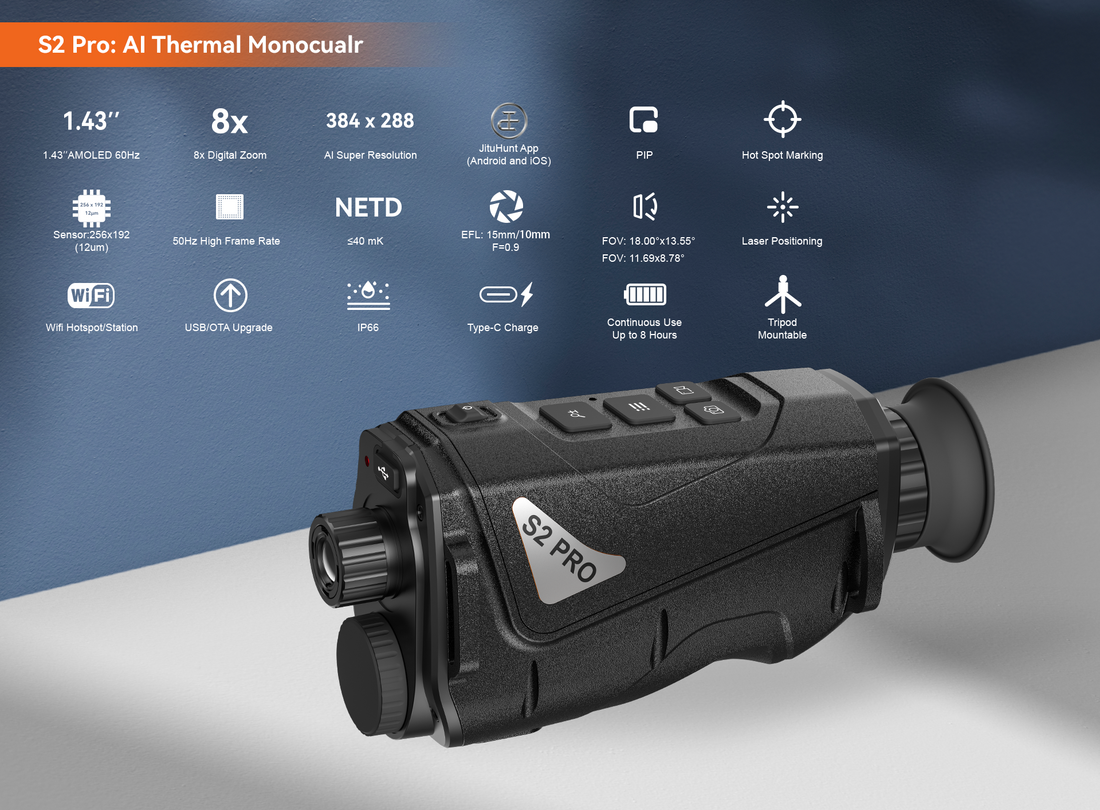
Thermal monoculars have many applications in observing animals
Share
Thermal monoculars have many applications in observing animals. Here are some of the main ones:
Animal behavior research
Night behavior observation: Many animals are active at night. Thermal imaging monoculars allow researchers to clearly observe their behavior in the dark without interfering with the normal activities of animals as with visible light illumination. For example, study the foraging, migration, and social behaviors of nocturnal animals such as bats, owls, and raccoons at night.
Observation of hidden behavior: Some animals are good at using the environment to hide. Thermal imaging monoculars can detect animal heat signals through vegetation and camouflage, which helps to observe their hidden behaviors and habits in the natural environment, such as observing how hares, deer, and other animals use terrain and vegetation to avoid natural enemies.
Animal ecological survey
Population statistics: In large areas of wild environments, using thermal imaging monoculars can more efficiently conduct a census of animal populations. It can quickly scan large areas and find animals hidden in the grass and woods, avoiding omissions caused by animal concealment in traditional visual surveys, thereby more accurately estimating the number of animal populations. For example, it is widely used in population surveys of antelopes on grasslands and wild boars in mountains.
Habitat utilization research: By observing the distribution of thermal signals of animals in different areas, researchers can understand their use of habitats, including activity range, preferred habitat types, habitat changes in different seasons, etc. For example, understand the activity areas of bears in mountains and forests in different seasons, and their relationship with food resources and water sources.
Animal protection and rescue
Search for injured animals: When animals are injured or sick, they may hide in places that are not easy to be found. Thermal imaging monoculars can help rescuers find them quickly so that they can provide timely rescue. For example, looking for injured birds in the forest, looking for injured large mammals in the wild, etc.
Illegal hunting monitoring: Used to monitor illegal hunting behavior, thermal imaging monoculars can detect poachers and captured animals hidden in the dark, which helps to stop illegal behavior in time and protect animal resources. At the same time, it is also possible to find possible hunting traps or dangerous areas by observing abnormal gatherings or activities of animals.
Wildlife Monitoring
Border and protected area monitoring: Setting up thermal imaging monocular monitoring points at the borders of nature reserves or key areas of wildlife habitats can monitor the entry and exit of wildlife in real time, prevent illegal poachers from entering, and protect the safety of wildlife. For example, in some large wildlife reserves in Africa, it is used to monitor the activities of rare animals such as elephants and rhinos to prevent poaching.
Ecosystem change monitoring: Long-term use of thermal imaging monoculars to observe animals can reveal changes in animal distribution and behavior, thereby indirectly reflecting changes in the ecosystem. For example, changes in environmental factors such as changes in water sources and reduced vegetation in a certain area may cause changes in the range of activity and behavior patterns of animals. These changes can be discovered in a timely manner through thermal imaging monitoring, providing a basis for ecological protection.
